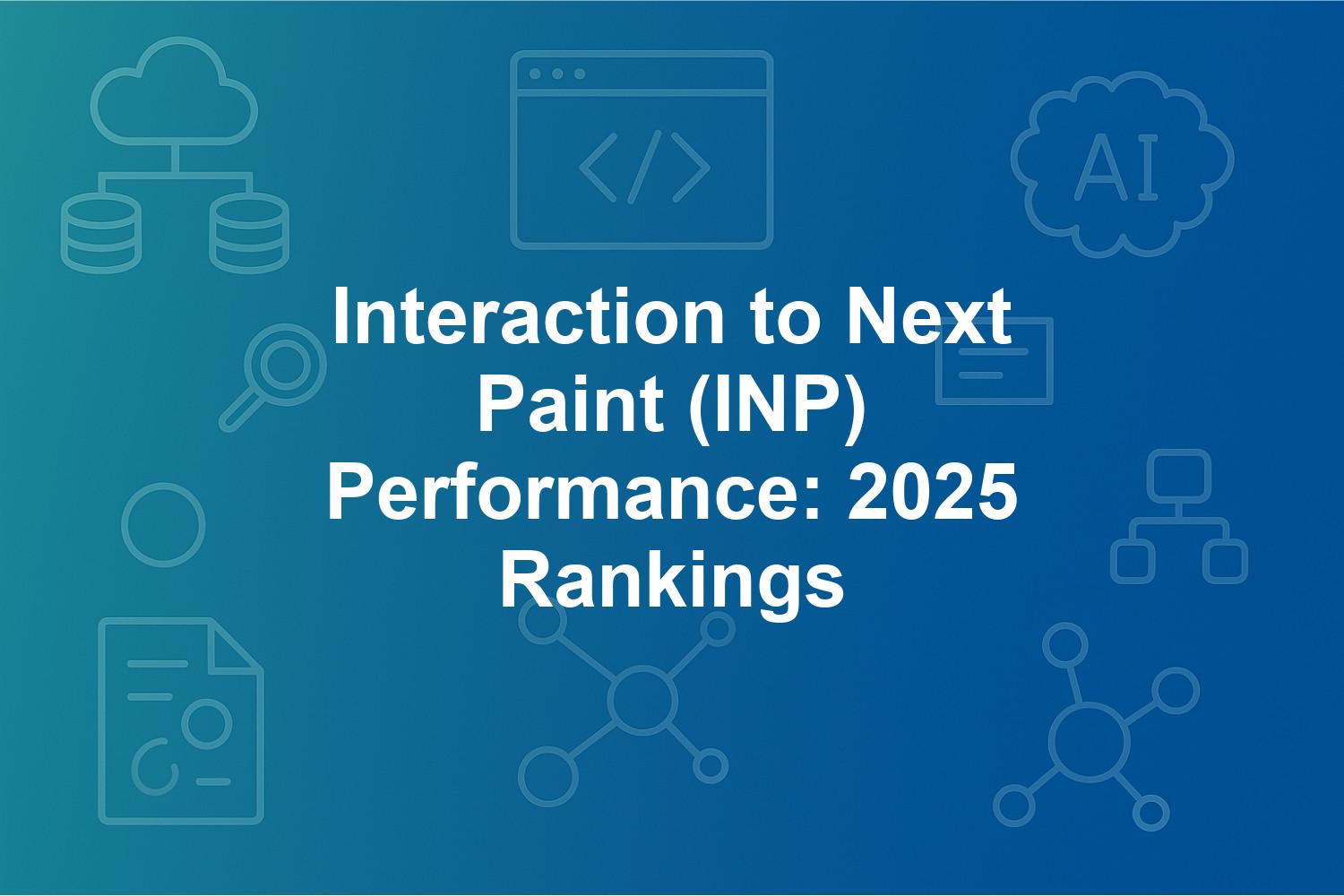Blog
Interaction to Next Paint (INP) Performance: 2025 Rankings

Understanding Interaction to Next Paint (INP) Performance: What to Expect in 2025
As we move towards 2025, web performance metrics are becoming increasingly critical for businesses looking to enhance user experience and improve their search engine rankings. One of these pivotal metrics is Interaction to Next Paint (INP), which measures the responsiveness of your web pages. Understanding INP is essential for developers, marketers, and website owners determined to keep up with evolving web standards. In this article, we’ll explore INP performance rankings, what they mean for your website, and how you can optimize for better user interaction.
What is Interaction to Next Paint (INP)?
Interaction to Next Paint (INP) is a core web vital metric that evaluates the time it takes from a user’s interaction with a web page until the next visual change occurs on the screen. Essentially, it assesses how quickly a webpage reacts to user actions, such as clicks or taps. An optimal INP score can significantly affect user satisfaction, retention, and, ultimately, conversion rates.
Why INP Matters for Your Website
IMPROVING INP IS CRUCIAL FOR SEVERAL REASONS:
- User Experience: A quick INP translates to smoother interactions, resulting in a better overall user experience.
- Search Engine Optimization (SEO): Google considers user experience metrics when ranking websites. A good INP score can improve your visibility in search results.
- Conversion Rates: Websites with faster interaction times generally see higher conversion rates. Users are more likely to make purchases or engage with content if they don’t experience delays.
Key Factors Affecting INP Performance
-
JavaScript Execution: Heavy or poorly optimized scripts can delay interactivity. Reducing script execution time is key.
-
Render-Blocking Resources: Resources that block the initial rendering process can increase INP. Minimize these to improve performance.
-
Server Response Times: A fast server response is crucial. Optimize server settings and consider using Content Delivery Networks (CDNs) to enhance loading speeds.
- Third-Party Integrations: Sometimes, third-party scripts can introduce delays. Be selective and ensure that they are as optimized as possible.
How to Optimize for Better INP
Improving your INP score involves focusing on various aspects of web performance. Here are some actionable tips:
-
Optimize JavaScript: Use asynchronous loading for JavaScript files, which allows the browser to load other elements without waiting.
-
Minimize CSS: Similar to JavaScript, minimization of CSS files prevents delays in rendering.
-
Use Lazy Loading: Implement lazy loading for images and videos so that they only load when they are needed.
- Monitor Real User Metrics: Use tools like Google PageSpeed Insights or Lighthouse to gather real user data on INP.
Tools for Measuring INP Performance
Several tools can help you measure and analyze your INP score effectively:
-
Google PageSpeed Insights: Offers insights into how your web pages perform on both mobile and desktop.
-
WebPageTest: Provides comprehensive testing of your webpage’s speed, including INP metrics.
- Lighthouse: A robust tool integrated into Chrome DevTools that assesses various performance parameters, including INP.
FAQs about INP Performance
1. What is considered a good INP score?
A good INP score is generally below 200 milliseconds. This allows users to experience seamless interactions without delays.
2. How does INP affect SEO rankings?
Google considers various user experience metrics, including INP, when determining search rankings. A well-optimized INP can positively impact your SEO performance.
3. Can INP be measured in real-time?
Yes, you can use tools like Google Analytics or the Web Vitals extension to monitor INP in real-time for actual user interactions.
Conclusion
As web technologies continue to evolve, understanding and optimizing your Interaction to Next Paint (INP) performance is more crucial than ever. As we head into 2025, make it a priority to analyze your current web practices and implement the best strategies for improving user experience. The benefits of a quick INP score—enhanced user satisfaction, improved SEO, and higher conversion rates—make it a worthy investment for any online presence.
For more insights on web performance, consideration of related metrics like First Input Delay (FID) and Cumulative Layout Shift (CLS) can also help you achieve a comprehensive understanding of your website’s overall user experience.
Internal Links:
External Links:

